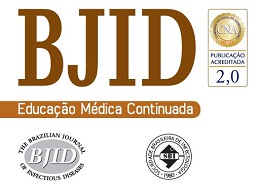Dot-ELISA using the outer membrane complex antigens of Neisseria meningitidis as a target was standardized for rapid detection of meningococcal-specific antibodies in human serum. We investigated the level of meningococcal-specific IgG, IgA, and IgM in serum using dot-ELISA with outer membrane antigens prepared from Neisseria meningitidis serotype B:4.19:P1.15,3,7,9 (a strain isolated from a Brazilian epidemic). The dot-ELISA is based on the same principles as the standard ELISA and is useful for detection of anti-N. meningitidis B antibodies in serum of patients with meningococcal infections. For the assay, outer membrane complexes (OMCs) were absorbed by nitrocellulose membrane and blocked with a 5% skim milk solution. Serum samples were drawn upon hospital admission and during convalescence from patients with meningococcal septicemia, and single samples were drawn from uninfected controls. We retrospectively examined a total of 57 serum samples: 35 from patients infected with N. meningitidis B, 12 from patients infected with Haemophilus influenzae b, and 10 from health individuals. When performed at room temperature, dot-ELISA took approximately four hours to perform, and the optimum antigen concentration was 0.42 μg per dot. The specificity of IgG, IgM, and IgA demonstrates that dot-ELISA using OMCs from N. meningitidis B as a target is suitable for serologic verification of clinically suspected meningococcal disease in patients and for titer determination of antibodies produced during different phases of natural infection. Furthermore, the sensitivity of dot-ELISA was comparable to that of standard ELISA. Overall, dot-ELISA is simple to perform, rapid, and low cost. Further validation of the test as a screening tool is required.
The Impact Factor measures the average number of citations received in a particular year by papers published in the journal during the two preceding years.
© Clarivate Analytics, Journal Citation Reports 2025
SRJ is a prestige metric based on the idea that not all citations are the same. SJR uses a similar algorithm as the Google page rank; it provides a quantitative and qualitative measure of the journal's impact.
See moreSNIP measures contextual citation impact by wighting citations based on the total number of citations in a subject field.
See more



